
Improving Sales Pipeline: What a Healthy Pipeline Actually Looks Like
A full pipeline doesn’t always mean a strong pipeline.
Every sales team wants pipeline coverage. But if that coverage is inflated with dead, unqualified, or aging opportunities, it leads to missed forecasts, frustrated reps, and reactive sales leadership.
So what does a healthy sales pipeline actually look like? How do you measure it? What metrics actually matter? And most importantly, how can you make sure your pipeline isn’t just full but also functional?
This article breaks it down.
How Sales Pipelines Work (And Why They Often Don’t)
A sales pipeline is a visual way to track all the deals in progress—from new prospects to closed-won. Different companies manage it in different ways. Some use territory-based assignments, some route by industry or deal size and others structure it around the buying group.
No matter the structure, here are some common issues that tend to pop up:
- Unreliable Data: Pipeline reports look great on paper but are inflated with dead or low-quality deals, leading to overconfidence and inaccurate forecasts.
- Inconsistent Deal Progression: Deals aren’t flowing smoothly from stage to stage. Lack of clarity in process or misaligned buyer journeys lead to deals stalling.
- Manual, Reactive Sales Ops: Sales Ops teams are spending too much time cleaning data, chasing reps for updates, and pulling manual reports—instead of building systems that track pipeline health automatically.
- Forecast Inaccuracy: Leaders are forced to rely on outdated or overly optimistic pipeline data, which erodes trust with executives and derails revenue planning.
- Lack of Prioritization: Reps don’t have a system to triage high-impact deals, so they spend time chasing everything instead of focusing on what’s most likely to close.
- Marketing and Sales Handoff Issues: Poor alignment means leads enter the pipeline without being properly nurtured or qualified, creating a pipeline filled with false positives.
- Surprise Pipeline Gaps: Teams miss quarterly targets because no one spotted the lack of new pipeline being built. Without forward-looking pipeline metrics, it’s too late to fix once the quarter’s already started.
A healthy pipeline isn’t just about having more—it’s about having the right deals, moving at the right pace, with the right people involved.
The Signs of a Healthy Pipeline
A strong pipeline is filled with the right deals, moving at the right pace, with the right people involved.
Here are some characteristics of a healthy pipeline:
Pipeline Coverage Ratio of 3x–4x Quota
A healthy pipeline ensures you have 3 to 4 times your revenue target in a qualified pipeline for the upcoming quarter. This gives your team enough cushion to absorb slippage, lost deals, or unexpected pushouts.

Stage Conversion Rates Are Consistent and Predictable
Each stage of your pipeline should convert at a steady, healthy rate—typically 30–40% from Discovery to Proposal and 50–60% from Proposal to Negotiation. Sharp drop-offs or bottlenecks are signs something’s off and must be addressed promptly.
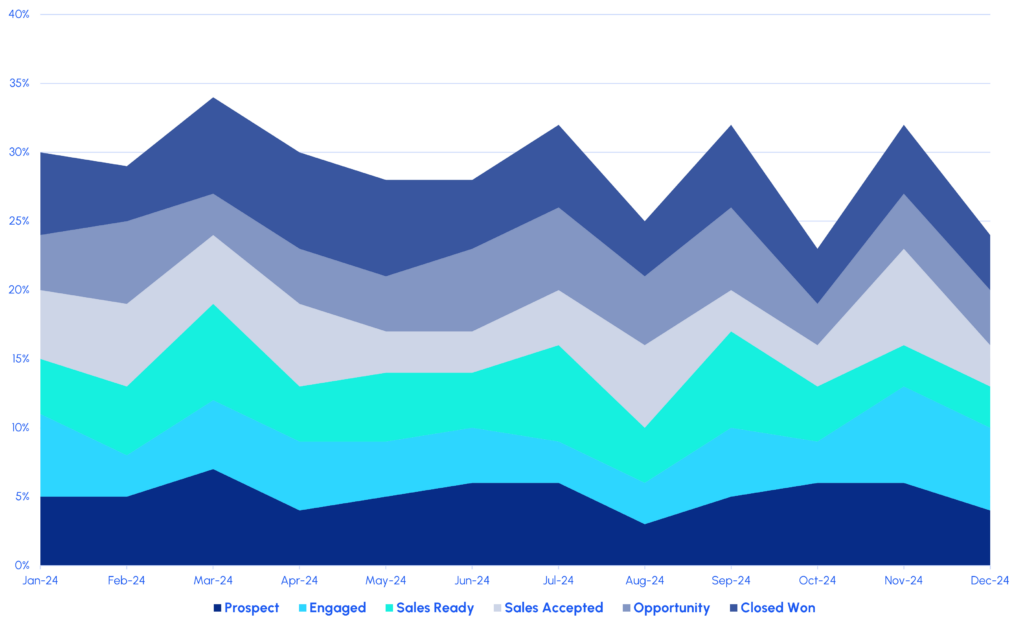
Proper Contact Roles as associated with Opportunities
Multi-threaded deals close faster and more reliably. That’s why every opportunity should include key buying group members clearly assigned using Salesforce Opportunity Contact Roles. Automating this step ensures consistency and completeness.
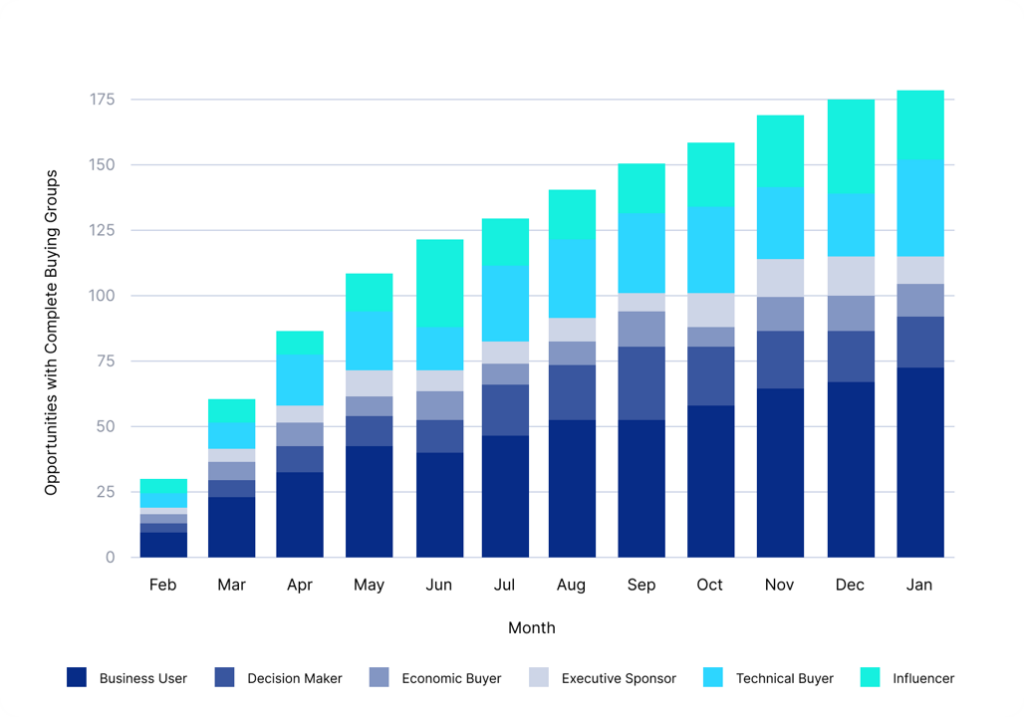
Opportunities Have Logged Next Steps and Upcoming Activities
Idle deals with no planned activity are risky and might be already slipping. Every deal should have a clear, documented next step. It could be a meeting, a proposal, or a follow-up call.
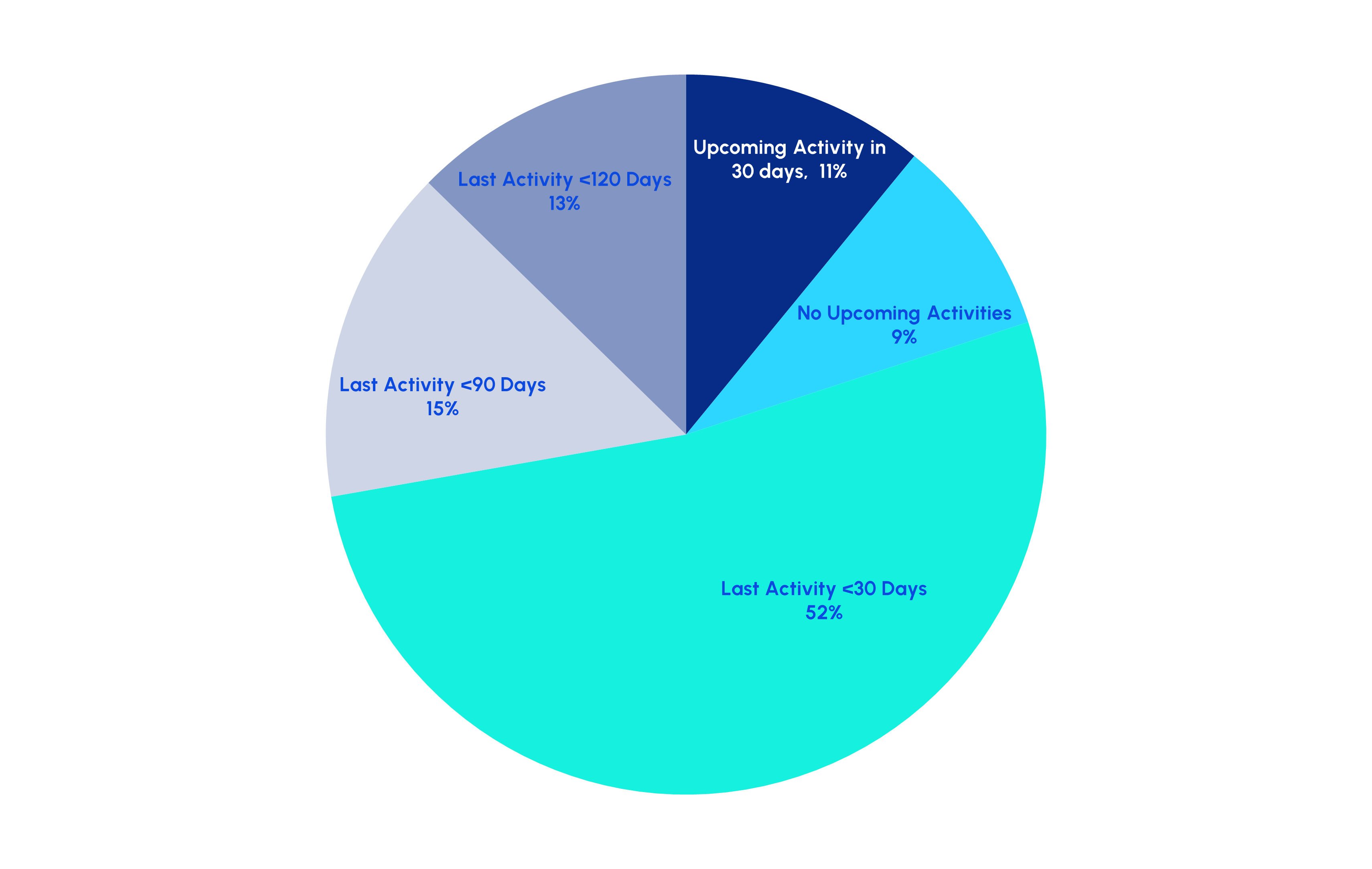
Low Volume of Stale Opportunities
In a healthy pipeline, fewer than 10–15% of deals are inactive or untouched in the last 30 days. Regular hygiene reviews help identify aging deals so they can be requalified, re-engaged, or removed.

Balanced Funnel Distribution
Your pipeline should show a healthy distribution of deals across early, mid, and late stages. Overloaded early stages without enough progression or backloaded funnels with too few net-new deals signal imbalances that could affect future quarters.

Accurate Close Dates and Deal Amounts
Forecasts rely on data you can trust. Close dates and deal values should reflect what reps are hearing from buyers and not placeholders added during opportunity creation. Regular updates keep expectations grounded in reality.

Win Rate of 20–30% (or Above Industry Average)
Consistently strong win rates mean your team is qualifying reasonably, positioning well, and executing with precision. If your win rate dips, it’s time to review your ICP, messaging, or deal review process.
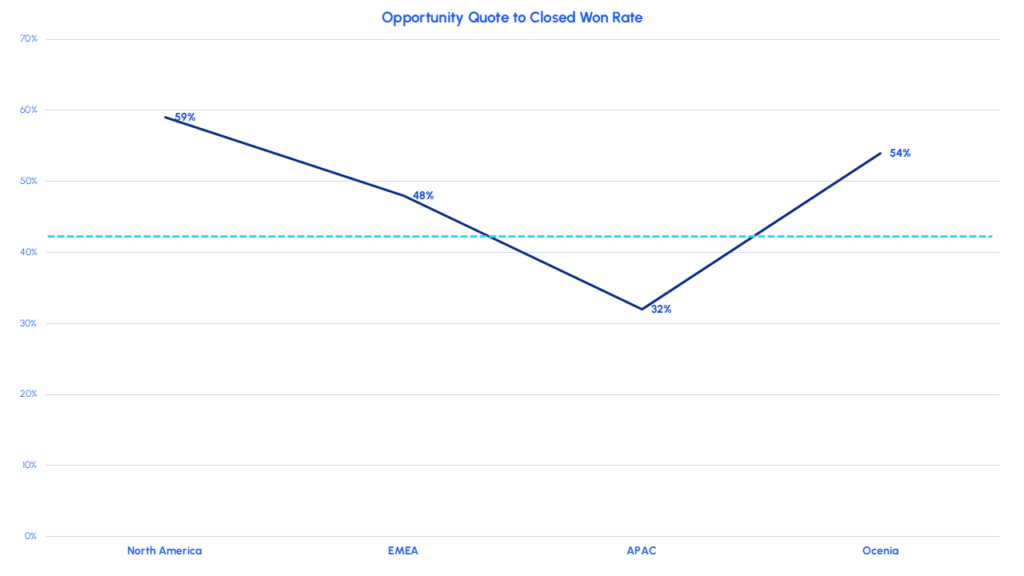
Average Sales Cycle Within Expected Range
In a healthy pipeline, deals move through at a pace that aligns with your historical benchmarks, like 60–90 days for mid-market SaaS. When cycles extend or accelerate unexpectedly, you should dig deeper to understand why.
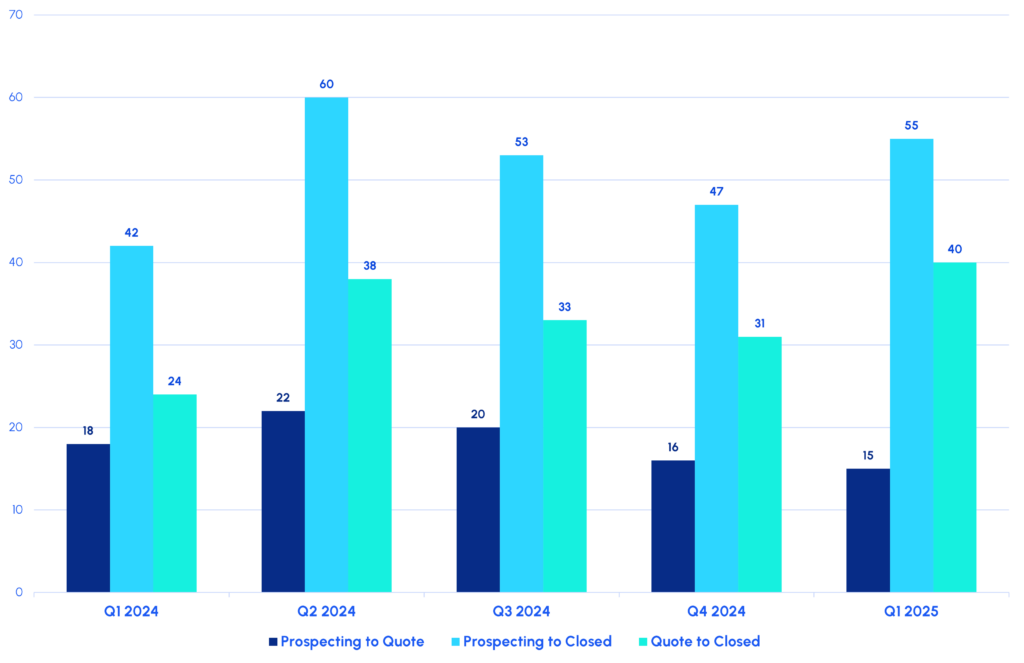
Forecast Category Matches Deal Reality
Your forecast categories should reflect what’s actually happening in the deal. “Commit” deals have clear buyer intent, confirmed timelines, and next steps in place. “Best Case” opportunities are progressing but still need work.

Ongoing Pipeline Creation and Replenishment
A healthy pipeline is consistently replenished with new opportunities. New deals are being added on a weekly or monthly basis in line with your top-of-funnel goals. This ensures your team isn’t relying on an aging pipeline to hit future targets.

Active Pipeline Review Process (Weekly or Bi-Weekly)
Managers and reps should meet regularly (usually weekly or bi-weekly) to review deal status, validate opportunity stages, and apply coaching. These reviews help flag stalled deals, clean out outdated pipeline, and ensure ongoing accuracy.
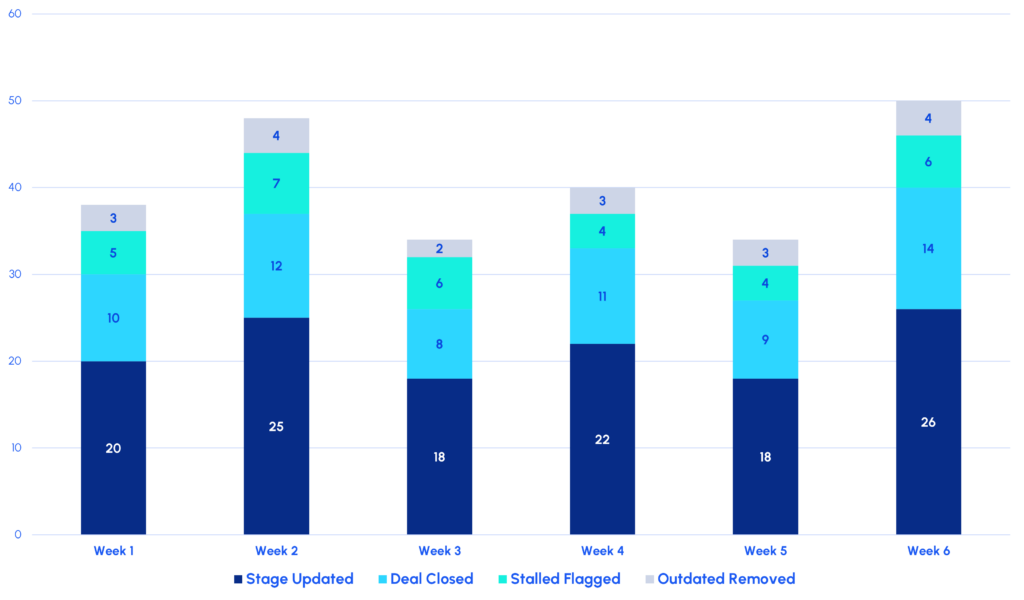
Marketing-Sourced Opportunities Convert at a Competitive Rate
Strong RevOps alignment shows up in the numbers. When marketing-sourced opportunities convert just as well as outbound ones, it’s a clear sign your inbound engine is working—and that your handoffs between teams are actually adding value.
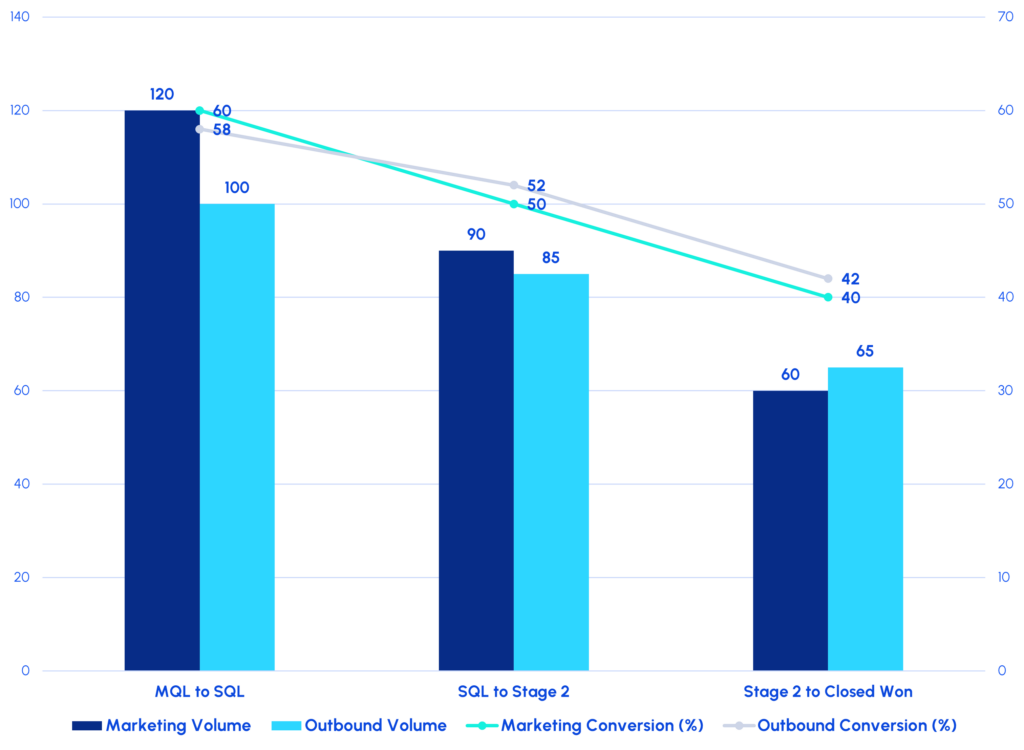
A Healthy Pipeline Doesn’t Just Happen. It’s Built and Maintained.
A healthy pipeline doesn’t just report progress—it drives it. When deals are qualified, updated, and consistently reviewed, your pipeline becomes a strategic asset. But building that kind of pipeline doesn’t happen by chance.
It takes process, structure, automation, and cross-functional alignment.
At RevOps Global, we help teams build exactly that. From lifecycle frameworks to buying group automation, we make sure every opportunity in your CRM tells the truth—and moves forward.
Explore our services to see how we help RevOps leaders turn processes into performance.


